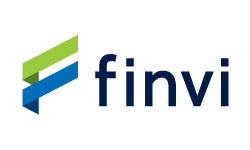Source: site
In the battle to keep customers and attract new ones, open banking is a key differentiator for credit unions, propelling top performers ahead while many others lag, potentially missing a pathway to member satisfaction.
“The 2025 Credit Union Innovation Readiness Index: Closing Gaps, Winning Members,” a June report produced in collaboration between Velera and PYMNTS Intelligence, underscores innovation as a defining factor for credit union success.
Facing shifting expectations from both consumers and small to medium-sized businesses (SMBs) toward digital convenience and tailored experiences, credit unions must modernize not just to compete with traditional banks, but to remain relevant to their members. The report, based surveys of 500 credit union executives, 15,000 U.S. consumers, and nearly 2,000 SMBs, measures the degree to which credit unions’ current and future product and feature portfolios align with their members’ preferences.
The responses show that innovation must be targeted, data-informed and aligned with member expectations. That data, permissioned to banks to share with partners to develop apps and other features, can personalize everything from budgeting tools to loan offers. Open banking can also help CUs fine tune their cross-channel experiences. As more than 1 in 2 current members still prefer in-person interactions, nearly half of recent defectors say a lack of digital tools factored into their decision to leave. These contrasting signals underscore a critical truth: These institutions must balance their legacy strengths with future-facing capabilities.
Top-performing credit unions are surging ahead not merely by offering more features. The leaders have significantly increased their consumer innovation readiness by 13% over the past two years, and the readiness includes open banking.
- 85.6% of top-performing credit unions currently offer open banking, in stark contrast to just 12.9% of bottom performers. This represents a gap in foundational digital capabilities.
- Gen Z consumers are 72% more likely than the average consumer to value open banking, signaling its importance for attracting younger demographics and future market relevance.
- Small businesses that have recently switched away from a credit union are 168% more likely than average to desire open banking, indicating a significant role in member retention and avoiding churn among business clients.
Despite a noticeable shift toward digital channels, traditional branch services remain valued, with 51% of both consumers and SMB credit union members still preferring in-person interactions. However, this preference is balanced by a strong gravitational pull toward digital solutions among key segments: 68% of SMBs who recently switched from a credit union to another financial institution express a clear preference for online onboarding when applying for new products, which in turn can be fashioned through permissioned data. The “switching sentiment” is echoed by 48% of consumers and 52% of millennials who switched.
Open banking, of course, is tied to joint efforts between financial institutions and FinTechs. We found that success can hinge on the nature of external partnerships, with 79% of all credit unions citing them as instrumental for fostering faster and broader innovation.
Top performers strategically leverage these collaborations to gain speed and scale, whereas less innovative credit unions often depend on partners to acquire fundamental digital capabilities they currently lack.
Upcoming Events
Sign up for our newsletter
Sign up to get the latest news and updates about the industry, as well as announcements regarding upcoming conferences





